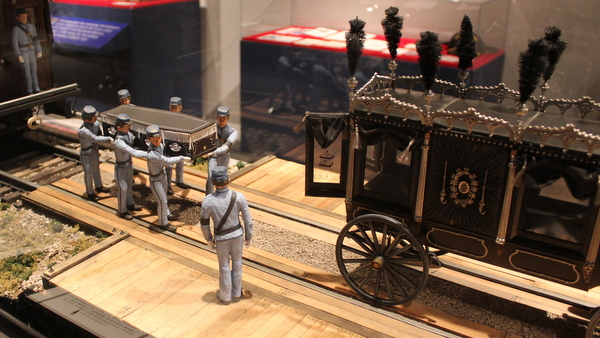
HOUSTON — “There is no man that has power over the spirit to retain the spirit; neither has he power in the day of death,” Ecclesiastes 8:8 reads.
Death, it’s often been said, is an inextricable part of life. But how cultures grieve their deceased and celebrate lives vary greatly.
Nowhere is that more apparent than at the National Museum of Funeral History in Houston. Since 1992, this 35,000-square-foot museum has aimed to educate visitors about funerals and how caring for the dead has changed over time.
“Life is precious and life is universal. Death happens to everyone,” said Genevieve Keeney, the museum’s president. “When it does, we have a ceremony known as a funeral. And that ceremony is a rite of passage and it’s a mark where we celebrate a life once lived.”
 |
The museum features a wide array of caskets and hearses, which one might expect to see at a funeral museum. But, the well-researched exhibits go much deeper, ranging from a look at celebrities’ deaths to the history of embalming to the mourning customs of the 19th century.
Even so, some visitors might be a little apprehensive at first, given the museum’s focus.
“After they come in, they’re pleasantly surprised that the museum has much more than they ever expected,” Keeney said. “And, nine times our of 10, it’s the opposite of what they expected.”
The museum “tells a story, where things began, how things transitioned, how the industry itself has evolved,” Keeney added. “If you look at the big picture, it shows how everybody celebrates life in a different way.”
To see the differences in how cultures conduct funerals, look no further than the museum’s collection of fantasy coffins. These elaborate coffins from the west African nation of Ghana look more like works of art than coffins.
“Are they real coffins? Do they really bury people in those?” Keeney said of guests’ reaction upon seeing these coffins. “The answer is yes, they do bury them and they still use them today.”
 |
One of the museum’s crowning achievements was the 2008 opening of “Celebrating the Lives and Deaths of the Popes.”
The 5,000-square-foot intricate display, which took three years of planning and consultation with the Vatican, provides an in depth look at the funeral rituals surrounding the pope. Exhibits include a replica of the coffin used during the last three papal burials, authentic Swiss Guard uniforms, a pope mobile used in 1982 and a replica of Pope John Paul II’s tomb in the Vatican.
“There is a lot that goes into preparing the pope for his burial,” Keeney said. “The curiosity was, what is that? There’s a lot that goes on behind the scenes that nobody ever sees.
“The goal was to captivate the Catholic faith, to educate those coming up in the faith, but to also … set it up in a way that people who aren’t in the faith can come in and still have an appreciation for it and still have a sense of understanding,” Keeney added.
Elsewhere in the museum, an exhibit highlighting presidents’ funerals includes an impression collection of artifacts. They include an authentic bill from President Washington’s funeral, the original eternal flame that illuminated President Kennedy’s grave in Arlington National Cemetery, a mourning badge worn at President Lincoln’s funeral in 1865 and the hearse used to transport President Reagan’s and President Ford’s caskets.
Of course, the museum’s exhibits also include a few funeral curiosities, such as a coffin built for three (for a family that planned to commit suicide after the death of their child) and a Packard bus from 1916. The funeral bus was designed to hold not only the coffin and pallbearers, but also 20 mourners.
The bus, however, didn’t exactly catch on.
As the story goes, during a trip up a steep hill in San Francisco, the bus tipped backward, sending its occupants tumbling and overturning the casket. That was all she wrote for the funeral bus, which for 40 years served as the home for a ranch hand before heading to the museum.
According to the museum’s slogan: “Any day above ground is a good one.” For more information, visit www.nmfh.org.





